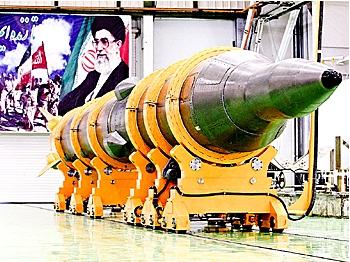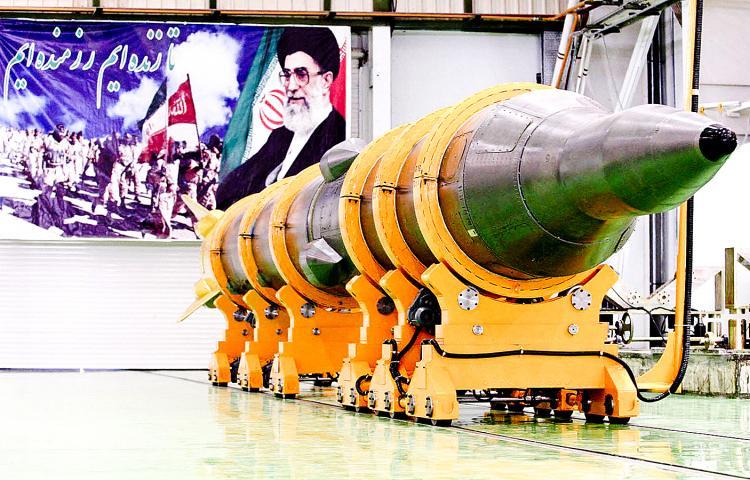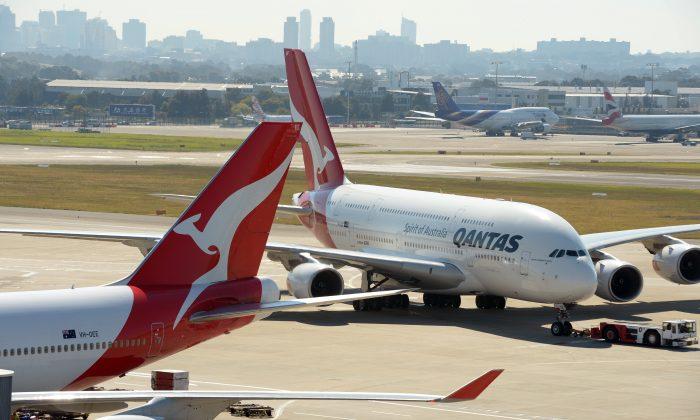Iran fired a test rocket capable of carrying a nuclear warhead just hours after appearing to accept an international deal over its nuclear program.
The European and U.S. officials reacted skeptically to Iran’s offer on Tuesday to comply with a U.N. request to export its uranium to the West for enrichment. President Mahmoud Ahmadinejad told state TV that he would have “no problem” giving the West its low-enriched uranium and taking it back several months later when it had been enriched by 20 percent.
“If we allow them to take it, there is no problem. We sign a contract to give 3.5 percent enriched uranium and receive 20 percent enriched after four or five months,” he said.
However, at a press conference on Wednesday, the French foreign minister, Bernard Kouchner, said that Tehran was “trying to buy time.” He told reporters in Paris that he was “perplexed and even a bit pessimistic.”
In a bid to break the international deadlock over Iran’s nuclear program, the U.N. suggested that Tehran export low-enriched uranium to Russia or France for further enrichment. The uranium could then be used as part of a civilian nuclear program. Iran has refused to accept the deal so far.
The U.S. State Department spokesman, P.J. Crowley, said that any deal should be agreed through the International Atomic Energy Agency (IAEA).
“If Iran is serious, they can inform the IAEA that they are ready to accept the deal that’s on the table,” he said.
On Tuesday, just hours after Ahmadinejad’s TV announcement, Iran stated that it had launched a 10-foot research rocket into space as part of their space program. The event has worried analysts, who believe the same technology could also be used to launch a nuclear warhead.
The Pentagon released a ballistic missile review on Tuesday that described Iran’s missile capacity as a threat to the U.S. forces and allies. Iran currently has missiles with a range of 1,250 miles, which could hit Israel or the U.S. bases in the Persian Gulf region. The United States has sent ships and missiles to the region in a bid to deter any potential attack.
In mid-January, Iranian defense minister, Ahmad Vahidi, had warned that the 90 Western warships stationed in the Persian Gulf—a waterway crucial for world oil supplies—would become targets if Iran was attacked over its nuclear program.
The United States announced failure of its first missile test aimed at shooting down a long-range missile on Wednesday. The test, which cost $150 million, was designed to mimic an attack from Iran.
Ali Larijani, speaker of the Iranian parliament, responded on Wednesday that the test was unnecessary.
“Regional countries should know that this puppet show by the U.S. while claiming to create security in the region is nothing except a new political ploy to increase the [U.S.] military presence at the expense of others,” he said.
The European and U.S. officials reacted skeptically to Iran’s offer on Tuesday to comply with a U.N. request to export its uranium to the West for enrichment. President Mahmoud Ahmadinejad told state TV that he would have “no problem” giving the West its low-enriched uranium and taking it back several months later when it had been enriched by 20 percent.
“If we allow them to take it, there is no problem. We sign a contract to give 3.5 percent enriched uranium and receive 20 percent enriched after four or five months,” he said.
However, at a press conference on Wednesday, the French foreign minister, Bernard Kouchner, said that Tehran was “trying to buy time.” He told reporters in Paris that he was “perplexed and even a bit pessimistic.”
In a bid to break the international deadlock over Iran’s nuclear program, the U.N. suggested that Tehran export low-enriched uranium to Russia or France for further enrichment. The uranium could then be used as part of a civilian nuclear program. Iran has refused to accept the deal so far.
The U.S. State Department spokesman, P.J. Crowley, said that any deal should be agreed through the International Atomic Energy Agency (IAEA).
“If Iran is serious, they can inform the IAEA that they are ready to accept the deal that’s on the table,” he said.
On Tuesday, just hours after Ahmadinejad’s TV announcement, Iran stated that it had launched a 10-foot research rocket into space as part of their space program. The event has worried analysts, who believe the same technology could also be used to launch a nuclear warhead.
The Pentagon released a ballistic missile review on Tuesday that described Iran’s missile capacity as a threat to the U.S. forces and allies. Iran currently has missiles with a range of 1,250 miles, which could hit Israel or the U.S. bases in the Persian Gulf region. The United States has sent ships and missiles to the region in a bid to deter any potential attack.
In mid-January, Iranian defense minister, Ahmad Vahidi, had warned that the 90 Western warships stationed in the Persian Gulf—a waterway crucial for world oil supplies—would become targets if Iran was attacked over its nuclear program.
The United States announced failure of its first missile test aimed at shooting down a long-range missile on Wednesday. The test, which cost $150 million, was designed to mimic an attack from Iran.
Ali Larijani, speaker of the Iranian parliament, responded on Wednesday that the test was unnecessary.
“Regional countries should know that this puppet show by the U.S. while claiming to create security in the region is nothing except a new political ploy to increase the [U.S.] military presence at the expense of others,” he said.






